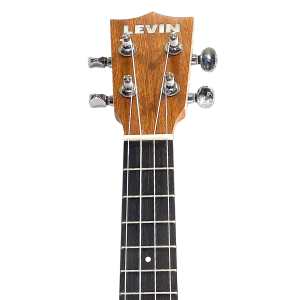A New Playing Experience With A Unique Sound: The New Ohana CK-70-A6
The 6-string ukulele— an instrument shrouded in mystery for many players, is known for an atypical combination of strings and a sound unlike any other ukulele. What makes a 6-string ukulele desirable? And why is Ohana making its own version of this unique ukulele?
The 6-string ukulele is not a new concept, but a unique instrument among ukuleles regardless. These stringed instruments are a hybrid of two related ideas. The first, your classic 4-string G-C-E-A ukulele.
Second is the 8-string “taropatch” ukulele, which features double the strings (GG-CC-EE-AA), or “double course”, for double the volume and voicing. The drawback for some players is the inherent “cluttered” or “busy” sound of having twice as many strings vibrating together at once. The solution? A 6-string ukulele that can still provide greater sound while retaining clarity.
Simply put, switching the low-A for a low-G increases your playable range, and includes that familiar low-G sound that is common even among 4-string ukulele modifications (g-C-E-A). Moving the additional 6th string from low-A to low-G allowed us to adapt the idea behind our widely successful 5-string model to this new instrument, and maintain that immediate punch of the lower register from the moment you strum. We found that it goes just as well with 6 strings as it does with 5.
In 2008, Ohana introduced the tenor 5-string TK-35G-5 model with the double-course low- and high-G pairing, making the 5-string ukulele more affordable and widely available to players and musicians. Now, the new Ohana alternate 6-string (“A6”) expands this concept with an added high-C string, bringing the 2 double-course pairs closer together for a more full harmonic sound.
-Ohana Owner, Louis Wu
Because of the way the double-courses are strung, the traditional 6-string is primarily utilized for strumming. With the high A string (A4) being the last string on a downward strum, it rings out next to that extra lower octave note (A3) immediately preceding it, which is intriguing to many players’ ears. The new Ohana Alternate Tuning generates a more full sound when the instrument is strummed because the two double-course pairs are next to each other. The low-G on the alternate double-course pair immediately sets a bass-y, low voicing to the overall tone, and the octave C pair further broadens both the tone and volume. It almost sounds like there are two instruments playing in unison. With the bottom two strings now being single E and A, the 6-string instrument in this new alternative arrangement can also be finger-picked for single-note melodies comfortably while the lower notes ring out.
This new and distinctive instrument’s real talent is revealed when strumming. The alternate string placement produces a sound that differs greatly from the traditional 6-string tuning. The way in which the lower-sounding strings of the A6 are arranged means you will hear a greater bass register early on. By nature, that full voicing will continue to ring out as you finish the strum and transition to your next chord. We find that this alternate sound is rather enjoyable and pleasing to the ear, due in part to the emphasized pairing of C and G.












